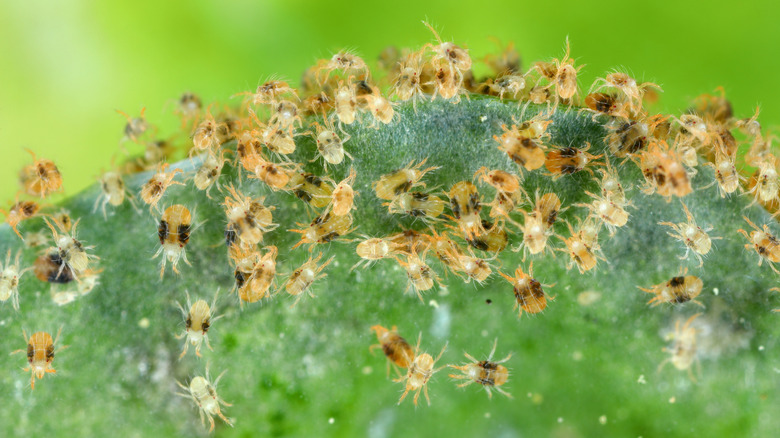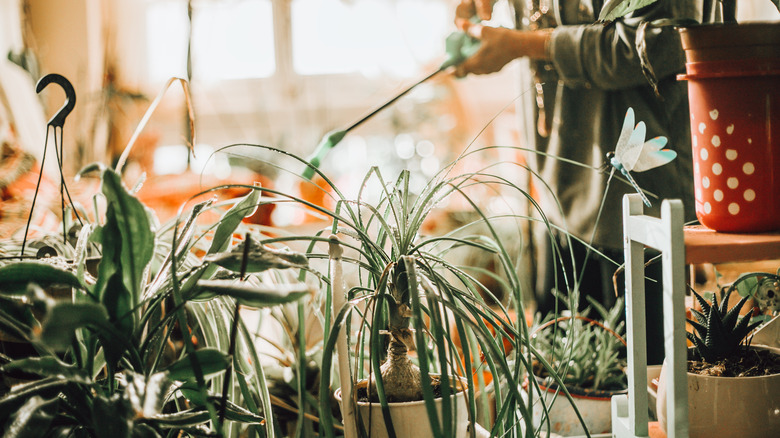The Stronger Alternative To DIY Remedies For Getting Rid Of Spider Mites
Spider mites are mighty, despite their tiny size. These pests settle in on houseplants, often making their presence known with a spider-like webbing left on leaves. Not everyone knows to look for spider mite eggs on plants before they become a problem. Once they've established themselves, spider mites can be challenging to remove. Yet, all is not lost if your plants are hosting these uninvited guests. If you catch them in an early stage, there are natural and non-toxic ways to get rid of spider mites. Sometimes, though, the dreaded conventional pesticide is the best choice. Take a good look at bifenthrin, but not until you've tried neem oil first. Both of these chemicals are proven to be effective defenses against these bugs.
Neem is a plant-based oil that kills spider mites with decent results. While it's not typically toxic to humans or other animals, the Colorado State University Extension considers horticultural oils like neem possibly the best home remedy for spider mites. If this preferred method doesn't work for you, give bifenthrin a try. This product contains a powerful miticide and is relatively safe for humans and animals. It's only available with a commercial permit in some areas of the US or it's not allowed at all, though. Bifenthrin also goes by the names Talstar, Talak and Bifen IT. It's considered a pyrethroid, as is neem oil. However, some pesticides in this category have actually shown to increase spider mite infestations. So, stay safe and stick only to neem oil and bifenthrin.
Using the right pyrethroids
Many sources suggest using pyrethroids without going into detail, and this can mislead home gardeners into thinking any pesticides in this category are safe to use on spider mites. There are a handful of pyrethroids that can lead to even more severe spider mite infestation, so only opt for ones that are proven to control these bugs. In general, these types of pesticides are so good at eradicating bugs that they kill beneficial insects, too. This includes bugs that feed on spider mites, and that's why you could see a frustrating resurgence. Some sources consider even naturally-derived neem oil a "last resort" and strongly advise against using it if the plant is in growth or flowering stage.
Start with a simple DIY neem oil spray to take on the infestation. But, if the more natural route doesn't give you the results you want, a well-chosen conventional pesticide like bifenthrin may be the only option. Neem oil has to come into contact with the bugs to kill them, so you need to apply it to the leaves with special focus on their undersides. You may also have to reapply the solution; some sources recommend doing this weekly until the situation is under control. In most US states, you can easily get a hold of reliable bifenthrin products, and they are considered safe to use indoors. Opt for a liquid that you can dilute and spray onto the plant, and take all precautions that are listed on the product's label.

